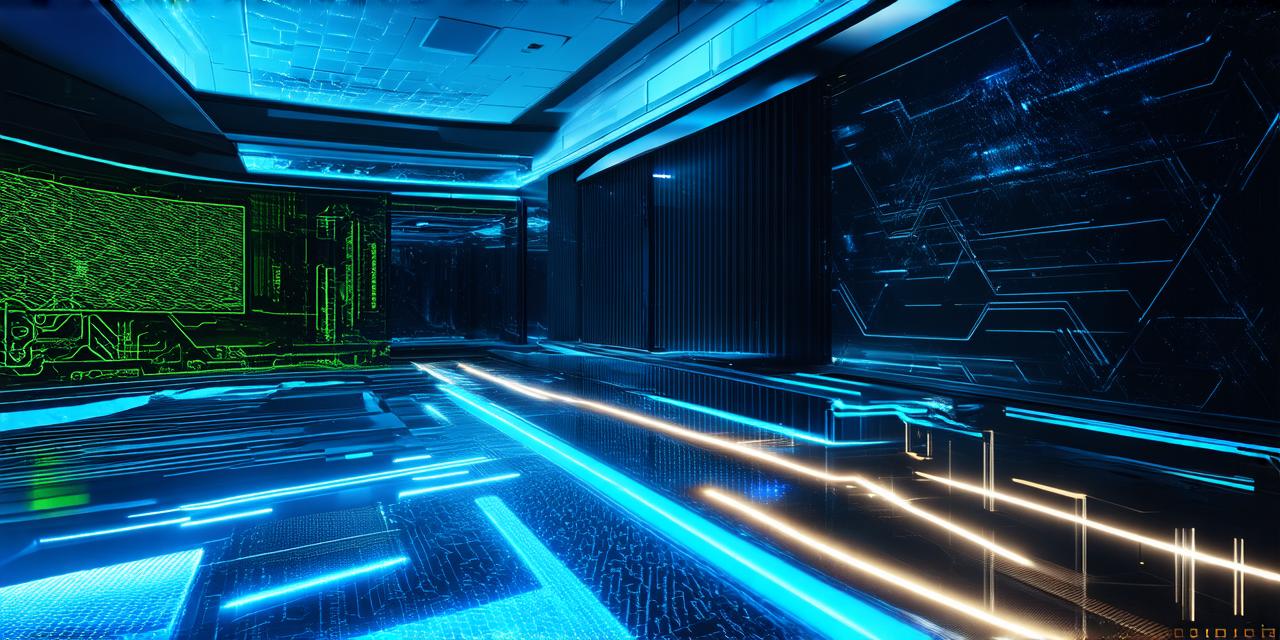Virtual reality (VR) is revolutionizing the way we interact with digital content, allowing us to experience immersive worlds that were once impossible. With the rise of VR technology, there has been a surge in interest from developers who want to create cutting-edge experiences for their users.
What are VR Development Kits?
A VR development kit is a collection of tools and software that allow developers to create VR applications for various platforms, such as PC, mobile, or consoles. These kits typically include an SDK (Software Development Kit) that provides a set of programming libraries and resources for building VR experiences, as well as hardware components that enable developers to test their creations on real VR devices.
Top VR Development Kits for Building Immersive Experiences
1. Unity Hub for VR
Unity is one of the most popular game engines in the world, and it has a strong presence in VR development. The Unity Hub for VR is a powerful tool that provides developers with everything they need to create VR experiences using Unity. It includes a comprehensive set of programming libraries, tools for creating 3D models, and support for various VR devices, such as Oculus Rift and HTC Vive.
2. A-Frame
A-Frame is an open-source web framework for building VR experiences using HTML, CSS, and JavaScript. It allows developers to create immersive experiences that can be accessed from any device with a web browser, including smartphones, tablets, and desktop computers. A-Frame supports a wide range of VR devices, making it an excellent choice for developers who want to reach a large audience.
3. Unreal Engine
Unreal Engine is another popular game engine that has been used to create some of the most impressive VR experiences on the market. It includes a powerful set of programming libraries and tools for creating 3D models, animations, and other assets that can be used in VR applications. Unreal Engine also supports a wide range of VR devices, making it an excellent choice for developers who want to create experiences that work across multiple platforms.
4. Vuforia
Vuforia is a popular AR (Augmented Reality) development platform that has been used to create some of the most impressive AR experiences on the market. It includes a comprehensive set of programming libraries and tools for creating AR applications, as well as support for various devices, including smartphones, tablets, and smart glasses. Vuforia can be used to create both AR and VR experiences, making it an excellent choice for developers who want to create immersive experiences that blend the real and virtual worlds.
5. WebVR API
The WebVR API is a set of programming libraries that allow developers to create VR experiences using web technologies such as HTML, CSS, and JavaScript. It provides a comprehensive set of tools for creating 3D models, animations, and other assets that can be used in VR applications. The WebVR API is still in its early stages, but it has the potential to become one of the most popular VR development platforms in the future.
Building Immersive Experiences with VR Development Kits
When building immersive experiences using VR development kits, there are several key considerations that developers should keep in mind:
- User Experience (UX)
The UX of your VR experience is critical to its success. Developers should focus on creating a seamless and intuitive user interface that allows users to interact with the virtual world in a natural and intuitive way. This includes designing interactive objects, creating realistic environments, and ensuring that the user can easily navigate through the virtual world.2. Performance
VR experiences require high performance to avoid motion sickness and discomfort. Developers should optimize their code for performance by reducing draw calls, minimizing texture sizes, and using efficient algorithms for rendering 3D models and animations.
3. Comfort and Safety
Comfort and safety are critical when building VR experiences. Developers should ensure that their experiences are comfortable to use for extended periods of time and that they do not cause motion sickness or other adverse reactions. This includes designing environments that are comfortable to stand in, minimizing excessive movement, and providing clear instructions for users.
4. Accessibility
VR technology is still in its early stages, and there are many people who may not have access to the latest VR devices or may have difficulty using them due to disabilities or other factors. Developers should ensure that their experiences are accessible to as many people as possible by providing alternative input methods, such as keyboard and mouse controls, and designing interfaces that are easy to use for people with disabilities.
Real-Life Examples of VR Development Kits in Action
One great example of a VR development kit in action is the Vuforia AR platform. Vuforia has been used to create some of the most impressive AR experiences on the market, including the popular Pokémon Go app. The app uses Vuforia’s AR technology to allow users to capture and battle virtual creatures in real-world environments.
Another great example is the Unity Hub for VR, which has been used to create some of the most impressive VR experiences on the market, including the popular Beat Saber game. The game uses Unity’s VR development tools to allow users to slice through blocks with light sabers in a virtual world.
Conclusion
In conclusion, VR development kits are an essential tool for developers who want to create immersive experiences that will captivate their audience. With the rise of VR technology and the increasing popularity of VR gaming and entertainment, there has never been a better time to start building VR experiences. Whether you’re a beginner or an experienced developer, there are plenty of VR development kits available that can help you create the immersive experiences of your dreams.
